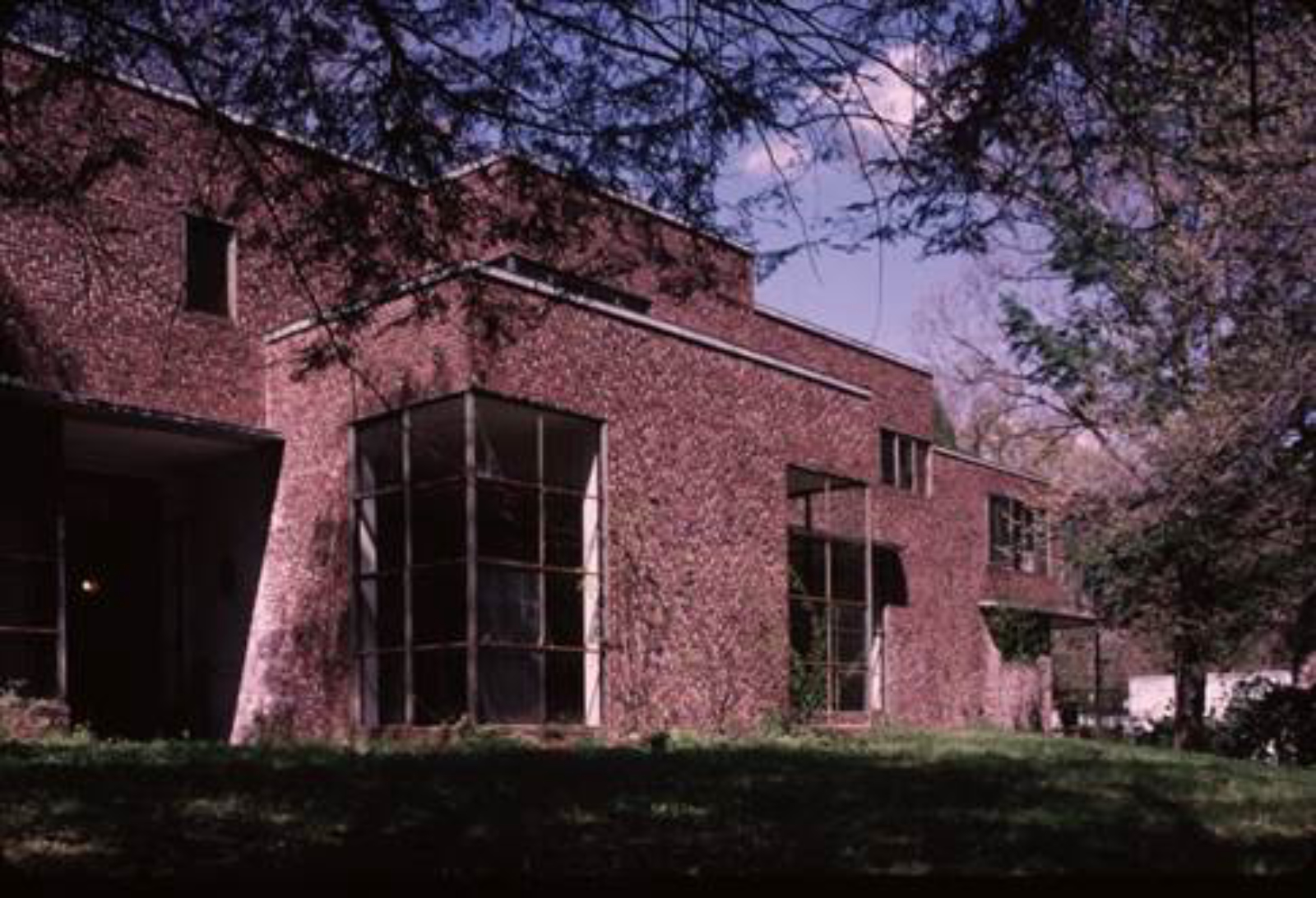The Wells House and Higgins Armory Museum
In the late 19th and early twentieth centuries the Blackstone Valley or greater Worcester area of Central Massachusetts was a thriving locus of industry and technology. One of the most interesting and progressive of the companies populating this area was the American Optical Company of Southborough, which was founded and run for many years by the Wells family. In 1933 then president George Wells commissioned a house from a young architect named Paul Wood that would become one of the earliest and most significant early modern houses in the region. Built of brick with extensive steel window walls the Wells house bears striking resemblance to the Wolfe and Lange brick houses of the 1920s by Mies van der Rohe. The 9,000 SF house sits on 56 rural acres and includes a barn and stables. The property has suffered in recent years and in presently once again on the market. Docomomo US/New England is being supported in this effort by Hammond Residential, the listing real estate broker.
Following lunch at a local restaurant, we will travel to Worcester itself to view the Higgins Armory Museum, arguably the first multi-story, fully steel and glass curtain wall clad building built in America (with a nod to the earlier Hallidie Building in San Francisco – which is only curtain wall on its street façade), 1929 -1930. Commissioned by John Woodman Higgins for the Worcester Pressed Steel company, the building, though classicizing in its proportion and detail is thoroughly modern in construction, exemplifying Higgins’ philosophy that the “practical can be beautiful and the beautiful, practical.” For many years the property thrived as a museum of armor – mostly pieces from Higgins extensive collection of European and Asian medieval and Renaissance vintage suites of armor and weaponry. After repeated efforts to boost its profile over the course of the last 15 years, the museum has recently closed and is in search of new life.
Both sites will have local experts present to discuss the history and significance of the properties.
